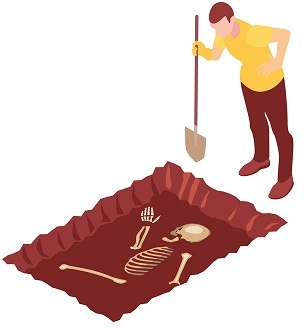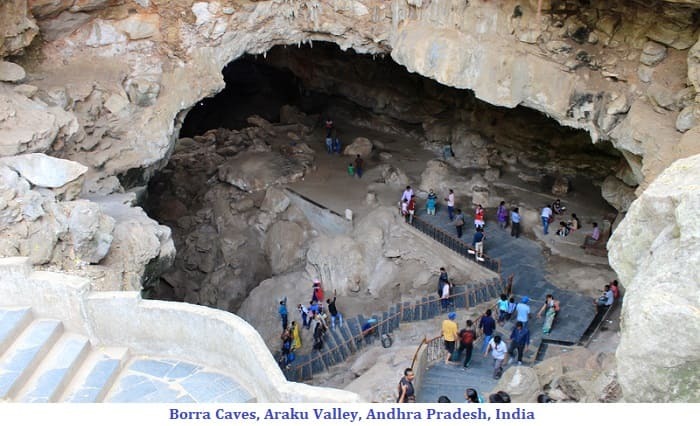

Ethnoarcheology is a subdiscipline of anthropology formed by the blend of two disciplines- ethnography and archeology.  It is a research technique to form an analogy between the traditional living societies and the archeological records. It originated in the end of the nineteenth century with increasing interest of ethnographers and archeologists to interpret archeological phenomena with the help of ethnographic data. Jesse Walter Fewkes is designated as the first ethnoarcheologist who was investigating the organization of Native American societies of the early twentieth century.
It is a research technique to form an analogy between the traditional living societies and the archeological records. It originated in the end of the nineteenth century with increasing interest of ethnographers and archeologists to interpret archeological phenomena with the help of ethnographic data. Jesse Walter Fewkes is designated as the first ethnoarcheologist who was investigating the organization of Native American societies of the early twentieth century.
The concept of ethnoarchaeology plays a crucial role for India for its vast culture and traditional ways of living of different social group that are still rural in character. The process of development among different cultures is clearly visible among the Indian tribes. They have preserved and carried the belief system and their traditional practices from generations to generations which is a great way of extracting the information about the prehistoric life and help the archaeological study. Kramer is an anthropologist who has done an important work on ethnoarchaeology in India. Pottery in Rajasthan, Ceramic ethnoarchaeology and village ethnoarchaeology are some of her works.

It was believed that the archaeological considerations are of less importance until it’s associated with a meticulous scientific testing process, so, it was remodified after thorough re-examination and ethnoarcheology is developed as a scientific tool to decipher the past. Hodder was the first person who worked in this direction and explained the use of analogy in the correct view. Analogy is defined as the transfer of information from one subject to another on the basis of some relation of comparability between them. Ethnographic parallelism or analogy is based on the principle of uniformitarianism which relies on the fact that the present is the key to the past.
There are different types of ethnoarchaeology defined by ethnoarchaeologists.
General Comparative analogy given by Willey is based on the connections between artifacts and behaviour related to them on a cross-cultural basis. Direct Historical analogy is based on an evident continuity from the prehistoric period to the ethnographic time.
Discontinuous and Continuous analogies are given by Gould. Discontinuous analogy is based on similar ecological, environmental, and cultural adaptation in areas that are widely separated in time and/or space while Continuous analogy is based on studying the unbroken linkage of the prehistoric adaptation to the historic cultural adaptations of past and present in the same area.
Formal and Relational analogies are given by Hodder. Formal analogy is defined as a circumstance with certain common properties and similarities but do not have any strong linkage between them. Relational analogy is defined as a situation more closely related with some cultural or traditional links.
In ethnoarchaeology, survival is a concept which is based on the principle of continuity. E B Tylor, a British anthropologist has employed this term, who explains that there are certain cultural practices and beliefs that are still being followed but some of them have lost their relevance, so those which are still followed are termed as survival (the set of conditions that survived with time).
The Juangs of Keonjhar, Odisha have a dormitory which is called Mandoghar, it has a wooden log continuously burning in a simmering way. Juangs believe that fire is auspicious. They take fire from here on auspicious occasions. According to folklore, the juangs lost the fire but by divine blessing they regained its back and now to prevent this danger in future they try to protect it by continuous burning in a simmering way.
Parallel as discussed above is a concept based on the principle of similarity of cultural groups of different geographical sites.
Onges tribe of Andaman and Nicobar Islands decorate their body with microliths. They also used microliths for tattooing purposes. But no Mesolithic site has been discovered from here but there can be a mesolithic site at another geographical area, so this can be regarded as a parallel to the prehistoric.
Ethnoarchaeology is basically a qualitative research strategy which helps to know the past by the study of present ethnographic data. The material sources of present help the interpretation of archeological record by parallel comparison. It is believed that the findings can be corroborated by increasing the number of parameters of similarities between different objects to provide some reasonable argument while providing archeological reasoning. The primary concern for relational analogy is to define functional interdependence between different properties of the societies and culture and if there are any differences, they remain insignificant. India has enormous capabilities for ethnoarchaeology. Many studies have already been undertaken with reference to hunter-gatherer groups like the Vanvaghris, Yanadis, Chenchues, etc. and agropastoral communities like the Bhils, Dhangars, etc.
Q1. What is a new analogy?
Ans. The new analogy is an ethnoarcheological type proposed by Ascher, and defined as the similarities between the cultures which manipulate similar environments in a similar way.
Q2. What is processualism?
Ans. Processualism or processual approach in archaeology uses scientific method to generalise the cross-culture human behaviour by using human societies as laboratories and identify environmental factors that affected the past human behaviour.
Q3. What is post processualism
Ans. Post Processualism deals with human behaviour from a perspective of social sciences or humanities. It does not favour generalisation rather concerned with context-specific principles and interpretations. It is also referred to as interpretative archeology.